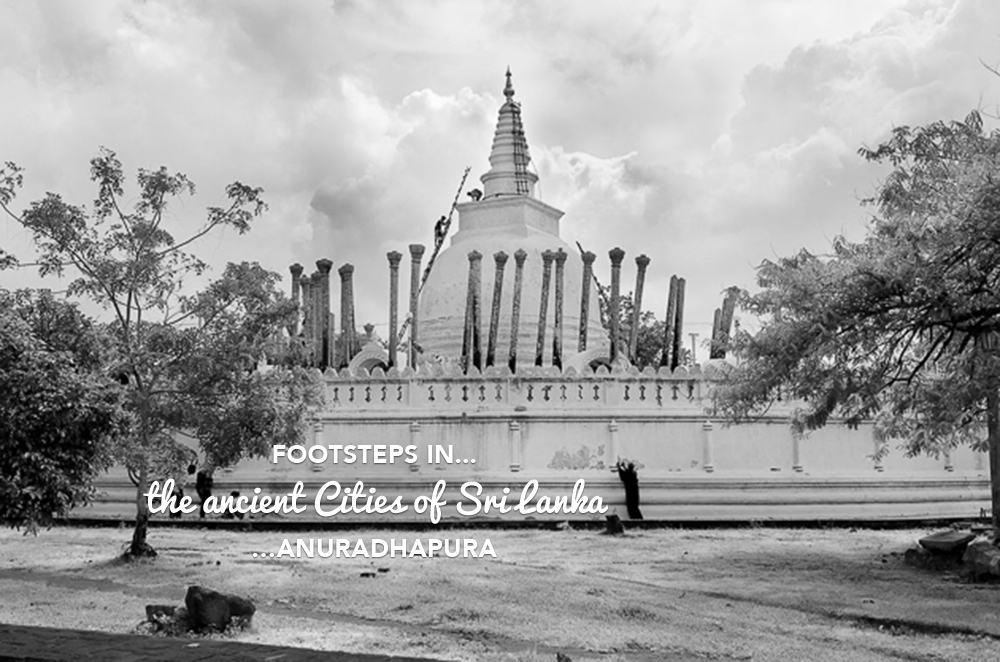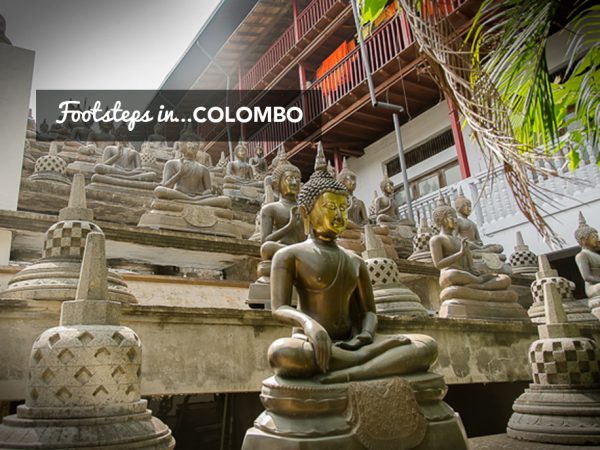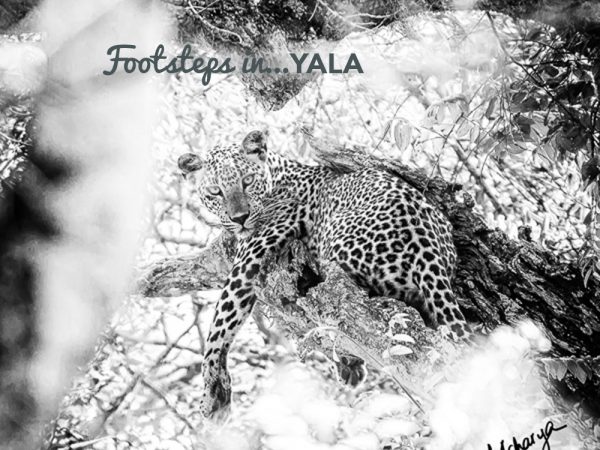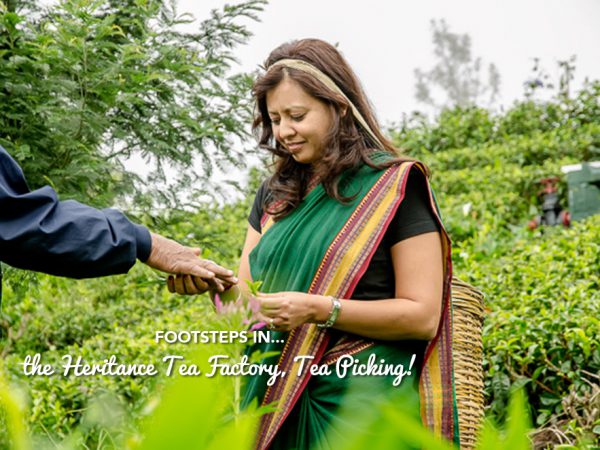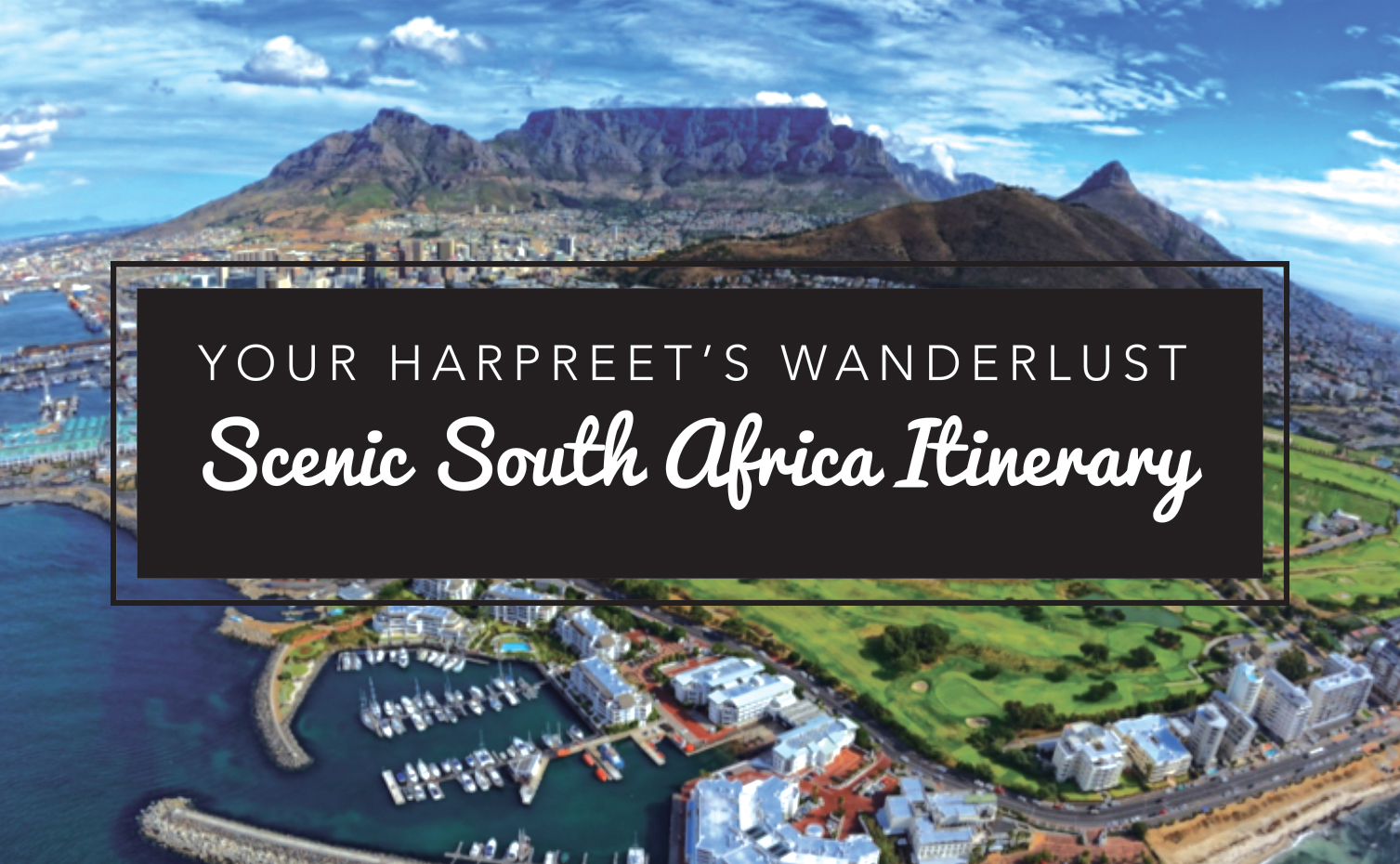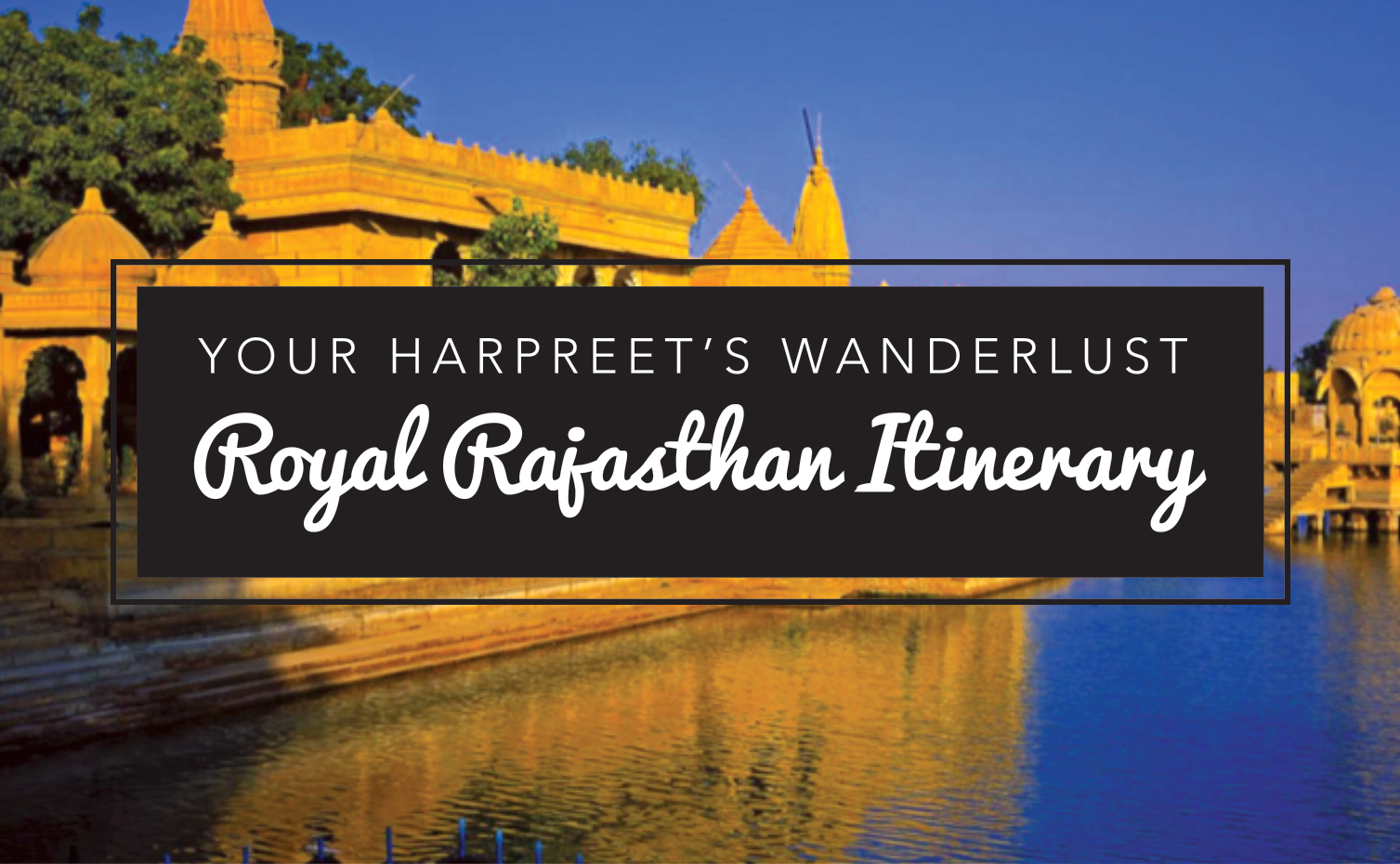I wake up hoping against hope that the rain has stopped!!! It rained all of last night. Our safari boots are soaked through from the trek to Dambulla Caves yesterday, and I have to dry them using the hairdryer in the bathroom or there will be no chance of wearing them today. My Imelda Marcos tendencies to carry a pair of shoes for every outfit have been curbed by M…so other than my now waterlogged safari boots, all i have in terms of footwear are my trusty havaina flip flops!!
I could wake up to the rain shower in the jacuzzi, with a panoramic view of Lake Kandalama and the rainforest below every morning. Amazing. Sans the peeping tom monkeys though, who have no qualms about ogling at you in the shower!
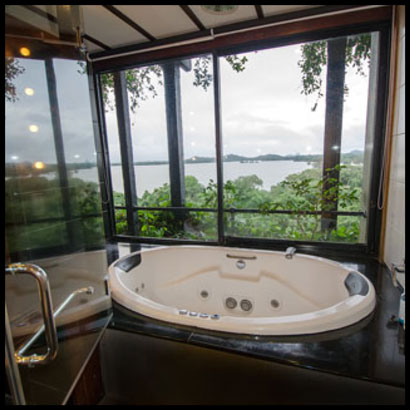
The breakfast spread at the Heritance is a food lovers heaven, and I wish we had time to sample the spread, with its array of breads and pastries, Sri Lankan rice and curry delights, what looks like a version of Sri Lankan masala dosa, but alas, too much time gazing at the panoramic view from the rain shower means too little time for brekkie and we need to hit the road to Anuradhapura so we hastily shovel some food down and get going. Tomorrow, i am spending an hour at breakfast. I will need the carbs for the climb up to Sigiriya Rock!!!
The road to Anuradhapura is good, and I think the sun God has listened to my prayers because the rain has finally let up and woop woop, the sun is shining….but my spirits are still somewhat damp as I have a darn cold sore about to form itself and of all things to forget in my now always fully stocked pharmacy (watch out for my blog post on what I consider travel essentials shortly) I forgot to pack the blisteze!!! Doh!!! I can see it on the dressing table at home! I found out just how hard it is to find blisteze in Sri Lanka…3 pharmacies in Dambulla didn’t have it, now we are heading towards Anaradhapura in the hope that it will be sourced.
The last 15 km just before the main town turns rocky, and the rain from the last few days has flooded rice paddy fields, homes and some areas of the road. It is amusing to see children splashing about on flooded roads, while we try to cross them! 2 and a half hours after leaving Dambulla we are in Anuradhapura, and a pharmacy on main street is our first stop. Trying to buy a tube of blisteze or zovirax here is akin to asking for a pink diamond in a grocers shop…..blisteze is completely non existent here!!! Thank God for the iPad and Ravi, between the two we managed to buy me a tube of zovirax. Ah, sweet relief, at last (those of you who go through the agony of cold sores will relate).
Anuradhapura is the oldest ancient city of Sri Lanka, and is a UNESCO World Heritage Site. It reminds me so much of Siem Reap…just replace the temples of Angkor Wat with the Stupas and Dagobas of Ceylon and the resemblance is uncanny! The ruins here contain a rich mix of archaeological wonders, all associated with the root of Buddhism, some of them still used for religious ceremonies today. A ticket costs US$ 25 per person, and is available from the Archaelogical Museum. Entry with this ticket is valid to all sites within this ancient city, except the Sacred Bodhi Tree for which you pay LKR 200 at the entry.
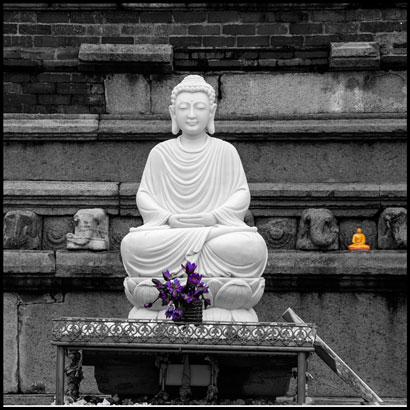
It is easy to rent a bicycle and ride around the various sites, and it is most useful to have a guide or your lonely planet guidebook handy otherwise these Stupas will be meaningless. Our meandering begins with a photo stop of the large, white dome shaped Mirisaweti Stupa…
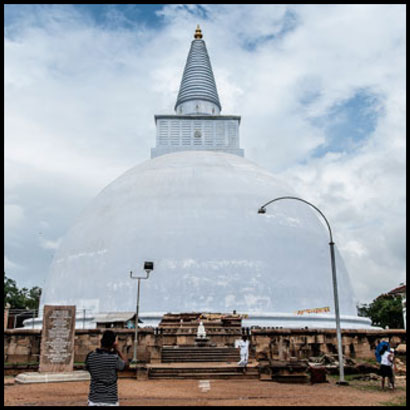
…and onwards to the Ruvanvelisaya Dagoba, a white stupa which Ravi tells me is 55m high and has a 90 metre base, flanked with a wall of elephants on its terrace, 318 in total. Most are replacements, however there are a few originals on the western end of the Dagoba. Again, shoes need to be left at the entrance (for LKR2) before going into the Dagoba complex, the entry of which is included in the ticket. This stupa was built by a Sri Lankan king and thought to be his finest construction, but sadly he didn’t live long enough to see it finished.
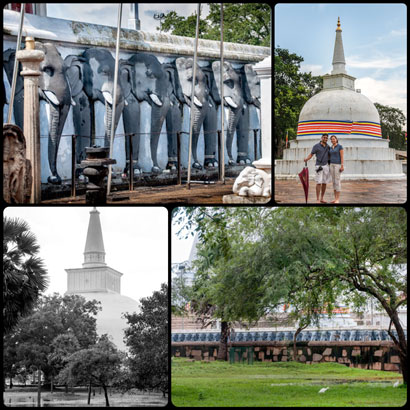
The land around the Dagoba is green, there are water holes and paddy fields of rice in which water buffalo graze. There are columns and pillars and pools, giving the area a very calm, zenlike atmosphere.
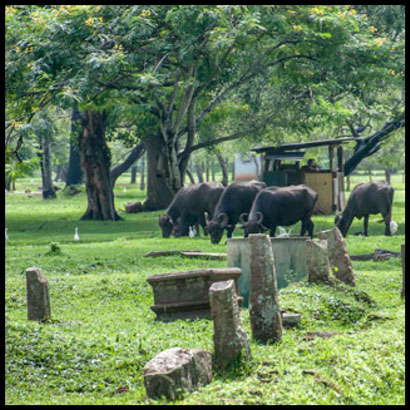
After a brief stroll around the Dagoba, we gather our shoes and walk towards the Sacred Bodh Tree, Sri Maha Bodhi, which is a 10 minute walk from the elephant terrace dagoba along a picturesque, green path. The entrance to the tree area costs Rs 200 per person, and shoes must be left with the guard. This Bodh Tree is the oldest tree of its kind in the world, and has been tended to by generations of Sinhalese. It was introduced to the country by way of a cutting, said to have been brought by the Princess of the monk who introduced Buddhism to Sri Lanka and so holds a reverent place in each Sinhalese’s heart. This cutting has grown into a large tree with several branches, the oldest and most sacred of which are held up by gold rails, and flanked with prayer flags, which also adorn the rail of the balconies surrounding the tree. It is not possible to go up close to the tree, however you can marvel at the tree from several angles within the complex. The entrance to the complex has a carving of a dancing apsara which again, immediately transports me to Siem Reap, reminding me that even though we are in a different country, the thread of religion and culture still finds a way to connect worlds. The sacred Bodhi tree area was probably my favourite place in Anuradhapura, another place where I felt that my monkey brain could stop its hopping and be at peace.
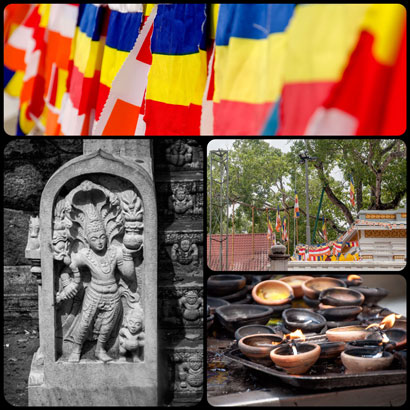
Thank goodness that the weather has held up. We are enjoying exploring this ancient city, and our next stop is in a beautiful woodland area close to the elephant dagoba, which houses the oldest dagoba in Sri Lanka and the world – the Thuparama Dagoba, one that makes it onto many a picture, including the cover of our guidebook! This stupa is said to contain the collar bone of the Lord Buddha, and is flanked by pillars. It is currently undergoing restoration work so we cannot go in, but we stop and watch monks clad in orange chip away at its base for a while.
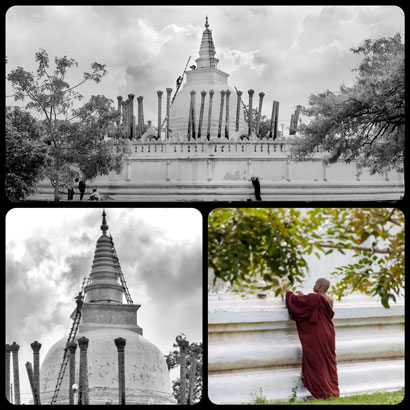
We see the Abhayagiri Dagoba in the distance, but seeing as we cant go in, choose to go and marvel at the Moonstone northwest of the dagoba, set in a calming, spiritual wooded area full of colourful fluttering butterflies. This Moonstone is elegantly carved and it is quite easy to see all the animals in its core.
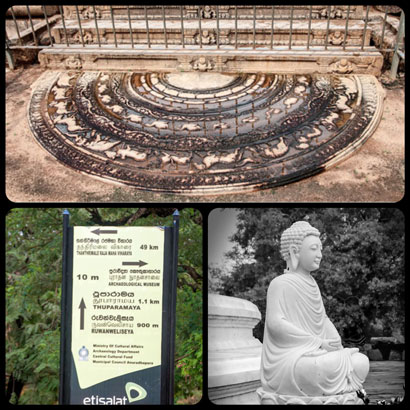
A quick stop at the Twin Ponds where the monks attached to the Abhayagiri Dagoba were said to bathe, and another photo stop at the Jetavanarama Dagoba, a large brown brick like stupa which was once the tallest monument in the world ends our day in Anuradhapura. It may seem like a whirlwind tour, but this has taken us a good 3 hours, between getting to the various stupas and dagobas, taking thousands of pictures and just reveling at the sites. We see many tourists riding around the sites with bicycles, which is a great way of getting from place to place and if my footsteps ever take me back to Anuradhapura, a bicycle ride through the stupas will be on the cards for me!
It really helped having Ravi with us, explaining what each stupa was for, otherwise these stupas would have been akin to monuments without any significance. You cannot really explore the insides of the stupas, but nonetheless it is still wonderful to be in the surrounding area, to be able to mingle amongst the locals, as they pray and worship and to try and find your own zen like calm in this ancient city.
We were meant to head to the town of Mihintale after exploring Anuradhapura, but I must confess that on hearing that there were over 1000 steps to climb to get to the temple we were meant to see in Mihintale, and the pain of yesterdays trek to the Dambulla caves still fresh in my mi

